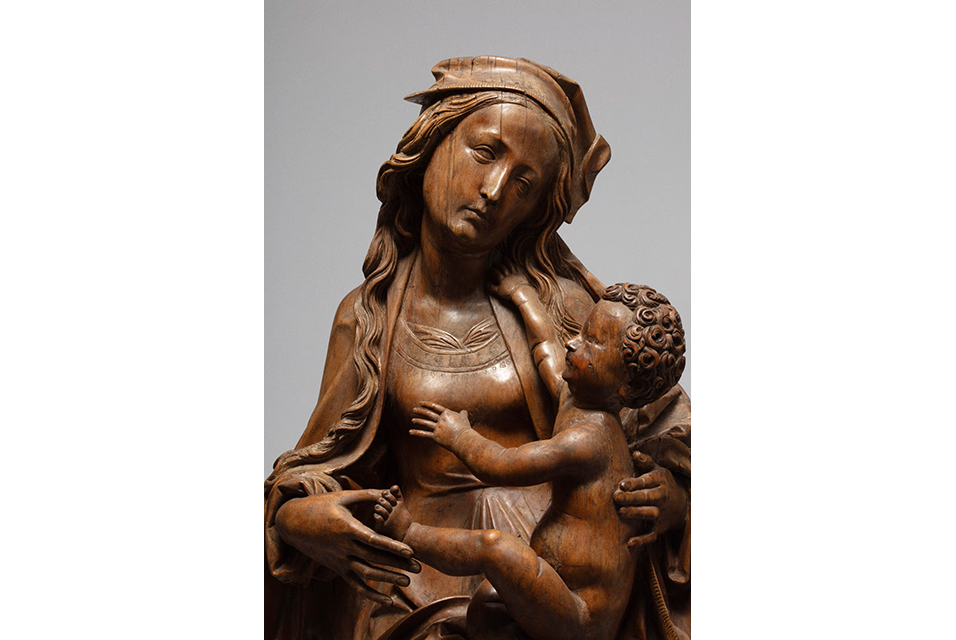Yale University Art Gallery acquired Tilman Riemenschneider's Virgin and Child Enthroned

The Yale University Art Gallery acquired an exceptional example of late Gothic sculpture, a Virgin and Child Enthroned by Tilman Riemenschneider (ca. 1460–1531).
This masterpiece, also known as the Seebenstein Madonna, was crafted circa 1505 and greatly enriches the Gallery’s collection of European medieval art.
The Virgin and Child Enthroned is masterfully carved from limewood (linden) and stands impressively at three feet tall. The sculpture captures the Virgin Mary seated on a throne, gracefully adorned with flowing draperies that intricately fold around her figure. The Christ Child, both dynamically and tenderly depicted, reaches up toward the Virgin’s chin with his right hand, while the Virgin affectionately gazes down, delicately supporting the Child’s back with her left hand. This piece exemplifies Riemenschneider’s unparalleled craftsmanship, his intricate skill with rendering drapery, and his ability to represent emotive expressions, making the sculpture a significant addition to the Gallery’s collection.
Tilman Riemenschneider (ca. 1460–1531) remains one of Germany’s most illustrious late Gothic sculptors. Born in Heiligenstadt, Riemenschneider received his artistic training possibly in the central and southwestern German provinces. He settled in Würzburg in 1483, where he rose to prominence, receiving extensive commissions over four decades. Riemenschneider’s work is celebrated for its polished surface and the natural beauty of wood grain. His esteemed legacy includes significant civic roles and active participation in the Peasants’ Revolt of 1525, a period during which he was imprisoned.
Main Image: Tilman Riemenschneider, Virgin and Child Enthroned (detail), also known as the Seebenstein Madonna, ca. 1500–1505. Limewood with traces of polychromy. Yale University Art Gallery
